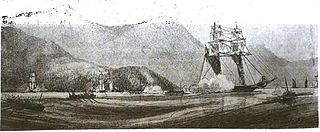 W
WThe Action of 1 January 1800 was a naval battle of the Quasi-War that took place off the coast of present-day Haiti, near the island of Gonâve in the Bight of Léogâne. The battle was fought between an American convoy of four merchant vessels escorted by the United States naval schooner USS Experiment, and a squadron of armed barges manned by Haitians known as picaroons.
 W
WThe Action of 3 March 2009 took place when the German Bremen-class frigate Rheinland-Pfalz chased and captured a pirate skiff in the Gulf of Aden, after the persons on board the small vessel fired at and attempted to stop the German-owned tanker MV Courier. The operation marked the first time that the German Navy captured a hostile vessel at sea since World War II.
 W
WThe Battle of Ad-Dawrah was a naval engagement fought on the night of 18 January and into 19 January in 1991 during the Gulf War. In the battle, Coalition forces captured an Iraqi offshore oil field forty miles from the Kuwaiti shore. The 29 POWs captured were the first POWs of the war. It was also the first surface engagement after the Coalition intervened in the war.
 W
WThe Battle of Anton Lizardo was a naval engagement of the Reform War which took place off Anton Lizardo, Mexico in 1860. A Mexican Navy officer, Rear Admiral Tomas M. Marin, mutinied and escaped to Havana, Cuba. There he formed a squadron of armed vessels to attack merchant ships and blockade Veracruz. The Mexican Government declared Marin a pirate and permitted foreign navies to attack his ships so the United States accepted the challenge, as they had several vessels patrolling in the Gulf of Mexico.
 W
WThe Capture of Monterey by the United States Navy and Marine Corps occurred in 1842. After hearing false news that war had broken out between the United States and Mexico, the commander of the Pacific Squadron Thomas ap Catesby Jones sailed from Lima, Peru with three warships to Monterey, California. The Americans' objective was to take control of the capital city before a suspected British cession could be achieved.
 W
WThe Capture of USS Chesapeake, also known as the Battle of Boston Harbor, was fought on 1 June 1813, between the Royal Navy frigate HMS Shannon and American frigate USS Chesapeake, as part of the War of 1812 between the United States and Great Britain. The Chesapeake was captured in a brief but intense action in which 71 men were killed. This was the only frigate action of the war in which there was no preponderance of force on either side.
 W
WThe Battle of Valparaíso, also called the Capture of USS Essex, was a naval action fought during the War of 1812. It took place off Valparaíso, Chile on March 28, 1814 between the frigate USS Essex and the sloop USS Essex Junior of the United States Navy and the frigate HMS Phoebe and sloop HMS Cherub of the Royal Navy. The British ships won the battle, and the American vessels were captured.
 W
WThe capture of USS President was one of many naval actions fought at the end of the War of 1812. The frigate USS President tried to break out of New York Harbor but was intercepted by a British squadron of four warships and forced to surrender. The battle took place several weeks after the Treaty of Ghent, but there is no evidence that the combatants were aware that the war had officially ended.
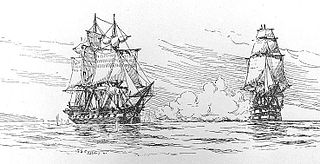 W
WThe Chesapeake–Leopard affair was a naval engagement that occurred off the coast of Norfolk, Virginia, on Monday, June 22, 1807, between the British warship HMS Leopard and the American frigate USS Chesapeake. The crew of Leopard pursued, attacked, and boarded the American frigate, looking for deserters from the Royal Navy. Chesapeake was caught unprepared and after a short battle involving broadsides received from Leopard, the commander of Chesapeake, James Barron, surrendered his vessel to the British. Chesapeake had fired only one shot.
 W
WThe Battle of the Delaware Capes or the 3rd Battle of Delaware Bay was a naval engagement that was fought off the Delaware River towards the end of the American Revolutionary War. The battle took place on 20 and 21 December 1782, some three weeks after the signing of the preliminary articles of peace between Great Britain and the former American colonies, and was an engagement between three British Royal Navy frigates HMS Diomede, Quebec and Astraea on the one side, and the South Carolina Navy's 40-gun frigate South Carolina, the brigs Hope and Constance, and the schooner Seagrove on the other. The British were victorious with only Seagrove escaping capture.
 W
WThe Battle of Flamborough Head was a naval battle that took place on 23 September 1779 in the North Sea off the coast of Yorkshire between a combined Franco-American squadron, led by Continental Navy officer John Paul Jones, and two British escort vessels protecting a large merchant convoy. It became one of the most celebrated naval actions of the war, despite its relatively small size and a considerable dispute over what had actually occurred.
 W
WIn the Action in the Gulf of Sidra, the United States Navy deployed aircraft carrier groups in the disputed Gulf of Sidra in the Mediterranean Sea. Libya claimed that the entire Gulf was their territory, at 32° 30' N, with an exclusive 62 nautical miles fishing zone. Libyan leader Muammar Gaddafi asserted this in 1973, and dubbed it "The Line of Death". The United States claimed its rights to conduct naval operations in international waters, a standard of 12-nautical-mile territorial limit from a country's shore. The engagement followed the 1981 Gulf of Sidra incident and preceded another incident in 1989.
 W
WThe Gaspee Affair was a significant event in the lead-up to the American Revolution. HMS Gaspee was a British customs schooner that had been enforcing the Navigation Acts in and around Newport, Rhode Island in 1772. It ran aground in shallow water while chasing the packet ship Hannah on June 9 near Gaspee Point in Warwick, Rhode Island. A group of men led by Abraham Whipple and John Brown attacked, boarded, and torched the ship.
 W
WThe Bombardment of Greytown or the Bombardment of San Juan del Norte was a naval action initiated by the United States sloop-of-war USS Cyane, commanded by George N. Hollins, against the town of Greytown in the Miskito Kingdom, which was under British protection. The town was completely destroyed.
 W
WThe Ingham Incident, or the Montezuma Affair, was a naval battle fought in 1835, the first between Mexico and the United States. The Mexican warship Montezuma patrolled the coast of Texas to prevent the smuggling of contraband into the territory. During the cruise, the Mexicans captured the American merchant ship Martha and later the Texan ship Columbia which led to a response by the United States Revenue-Marine revenue cutter USRC Ingham. A bloodless engagement was fought on June 14, and ended when the Montezuma was purposely run aground to prevent capture.
 W
WThe Battle of Lake Pontchartrain was a single-ship action on September 10, 1779, part of the Anglo-Spanish War. It was fought between the British sloop-of-war HMS West Florida and the Continental Navy schooner USS Morris in the waters of Lake Pontchartrain, then in the British province of West Florida.
 W
WThe Little Belt affair was a naval battle on the night of 16 May 1811. It involved the United States frigate USS President and the British sixth-rate HMS Little Belt, a sloop-of-war, which had originally been the Danish ship Lillebælt, before being captured by the British in the 1807 Battle of Copenhagen. The encounter took place off the North Carolina coast. The Little Belt Affair was one of many incidents and events that led to the War of 1812.
 W
WThe American Revolutionary War saw a series of military manoeuvres and battles involving naval forces of the British Royal Navy and the Continental Navy from 1775, and of the French Navy from 1778 onwards. While the British enjoyed more numerical victories these battles culminated in the surrender of the British Army force of Lieutenant-General Earl Charles Cornwallis, an event that led directly to the beginning of serious peace negotiations and the eventual end of the war. From the start of the hostilities, the British North American station under Vice-Admiral Samuel Graves blockaded the major colonial ports and carried raids against patriot communities. Colonial forces could do little to stop these developments due to British naval supremacy. In 1777, colonial privateers made raids into British waters capturing merchant ships, which they took into French and Spanish ports, although both were officially neutral. Seeking to challenge Britain, France signed two treaties with America in February 1778, but stopped short of declaring war on Britain. The risk of a French invasion forced the British to concentrate its forces in the English Channel, leaving its forces in North America vulnerable to attacks.
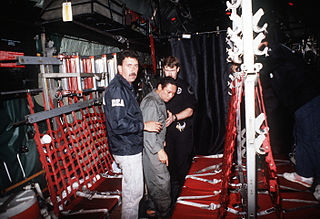 W
WOperation Nifty Package was a United States Delta and Navy SEAL-operated plan conducted in 1989 designed to capture Panamanian leader Manuel Noriega. When Noriega took refuge in the Apostolic Nunciature of the Holy See, deafening music and other psychological warfare tactics were used to convince him to exit and surrender himself.
 W
WThe Nuku Hiva Campaign was an armed conflict between the United States and the Polynesian inhabitants of Nuku Hiva during the War of 1812. It occurred in 1813, following Captain David Porter's decision to sail his fleet to the island for repairs before continuing his raid against British shipping. Upon arrival, the Americans became involved in a tribal war and allied themselves with the Te I'i people against the Happah and Tai Pi clans.
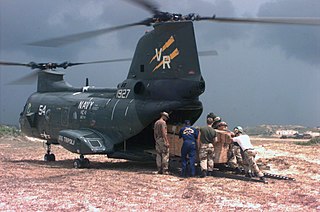 W
WThe Unified Task Force (UNITAF) was a United States-led, United Nations-sanctioned multinational force which operated in Somalia from 5 December 1992 until 4 May 1993. A United States initiative, UNITAF was charged with carrying out United Nations Security Council Resolution 794 to create a protected environment for conducting humanitarian operations in the southern half of the country.
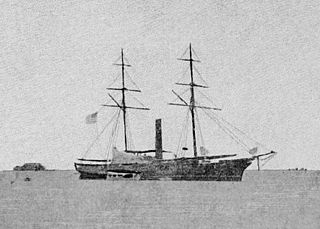 W
WThe bombardment of Qui Nhơn in 1861 was an attack by a United States Navy warship upon a Vietnamese held fort protecting Qui Nhơn in Cochinchina. United States forces under James F. Schenck went to Cochinchina to search for missing American citizens but were met with cannon fire upon arriving. In response to the attack the American warship bombarded the fort until it was reduced. The incident occurred during French and Spanish conquest of the nation.
 W
WThe Raid on Algiers took place on 11 December 1942, in the Algiers harbour. Italian manned torpedoes and commando frogmen from the Decima Flottiglia MAS were brought to Algiers aboard the Perla-class submarine Ambra. The participating commandos were captured after setting limpet mines which sank two Allied ships and damaged two more.
 W
WThe Rio de Janeiro Affair refers to a series of incidents during the Brazilian Naval Revolt in January 1894. Following three attacks on American merchant ships in the harbour of Rio de Janeiro, a bloodless naval engagement occurred between a United States Navy warship and an ironclad of Rear Admiral Saldanha da Gama's rebel fleet. Ultimately the Americans completed their objective, and Da Gama offered to surrender his fleet to the Americans, but the offer was never pursued.
 W
WThe Battle of Shimonoseki Straits was a naval engagement fought on July 16, 1863, by the United States Navy warship USS Wyoming against the powerful daimyō Mōri Takachika of the Chōshū clan based in Shimonoseki.
 W
WThe Shimonoseki campaign refers to a series of military engagements in 1863 and 1864, fought to control Shimonoseki Straits of Japan by joint naval forces from Great Britain, France, the Netherlands and the United States, against the Japanese feudal domain of Chōshū, which took place off and on the coast of Shimonoseki, Japan.
 W
WThe First Sumatran expedition, which featured the Battle of Quallah Battoo in 1832, was a punitive expedition by the United States Navy against the village of Kuala Batee, presently a subdistrict in Southwest Aceh Regency. The reprisal was in response to the massacre of the crew of the merchantman Friendship a year earlier. The frigate Potomac and its crew defeated the local uleëbalang (ruler)'s forces and bombed the settlement. The expedition was successful in stopping Sumatran attacks on U.S. shipping for six years until another vessel was plundered under different circumstances, resulting in a second Sumatran expedition in 1838.
 W
WThe second Sumatran expedition was a punitive expedition by the United States Navy against inhabitants of the island of Sumatra. After Malay warriors or pirates had massacred the crew of the American merchant ship Eclipse, an expedition of two American warships landed a force that defeated the Malays in two short engagements.
 W
WUSS Constellation vs La Vengeance, or the Action of 1 February 1800, was a single-ship action fought between frigates of the French Navy and the United States Navy during the Quasi-War. In the battle the American frigate USS Constellation tried to take the French frigate La Vengeance as a prize. Both ships were heavily damaged. Although the French frigate struck her colors (surrendered) twice, she managed to flee only after the main mast of her opponent had fallen.